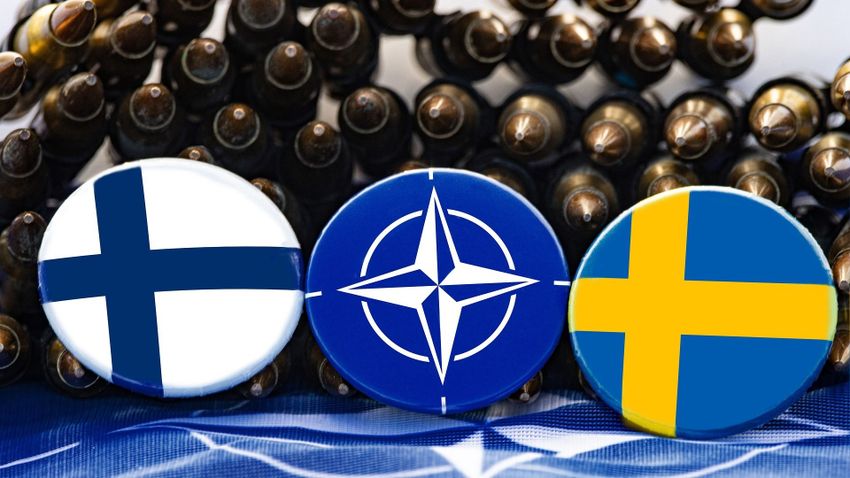Weapons, the military, defense, and the propensity for aggression are obviously as old as human societies. The army and the military industry serving it are an unavoidable part of the structure of states.
In historical eras, military force and its use for defense or conquest were present for different purposes.
In times of greater strategic challenges, military capabilities came together in the form of alliances in order to assert their will in this way.
A reinterpretation of the repeated division of the world in each age was conceivable along the lines of military power.
The annexation of territories, the acquisition of mineral resources or simply the ideology of the imperial outlook was the reason that incited wars.
The question rightly arises: is the spectacular renewal of the military industry still taking place today along the lines of the old ambitions, after a few seemingly quieter decades?
At the beginning of the 1990s, with the end of the bipolar world order, there was hope that an era of real peace was upon us. From the perspective of three decades, it is now clear that this was only an appearance.
There were - we hope there are still - countries where they really felt that weapons were no longer needed, and economic opportunities were developed in parallel with the downsizing of the military industry.
But there were powers that aimed to create such a destructive force - drone army, tactical nuclear arsenal, space weapons - which, assuming a minimal human presence, are capable of wreaking unforeseeable and unmanageable destruction on the entire territory of our planet.
All this would be carried out without front lines, without a safe hinterland.
After such antecedents, we arrive at the turn of the year 2022-2023, when the question is again on the agenda: can countries exist without militarily guaranteed protection.
Also, is it timely to create any kind of military alliance? The short answer to both questions is no and no!
Explained in a little more detail: the defense capability of a territory is suitable to curb the political "greed" of neighboring countries. In English: everyone should stay within their own limits.
Consequently, the defense policy of our time must be aimed at maintaining the status quo. It is visibly and obviously not so.
More and more hotbeds of tension erupted, leading to military clashes.
The second question, that is, whether it is necessary to form a military alliance, is also relevant, because apart from NATO, there is no other force field equivalent to it, which includes countries, since the Warsaw Pact organization, which before the 1990s was the former European socialist brought countries together.
That is why NATO's latest request to expand the number of member countries and to see Sweden and Finland within the alliance is surprising. There is no such political life situation, such an offensive force, which is preparing to attack Sweden and Finland.
"Well, there's the Ukrainian example," many say. However, Ukraine is not Finland and especially not Sweden. In addition, it is possible that the security of Europe could be guaranteed in parallel with the dissolution of NATO, by increasing the individual countries' own military defense capabilities.
The most important argument in support of this statement is that NATO has served the foreign policy interests of the United States in its last thirty years, even if it did not benefit the other members either individually or as a whole.
The American military industry, on which the US economy is based, is forced to push the administration of its country into conquering military actions – Iraq, Syria, Afghanistan.
But what does this have to do with European NATO members, including Hungary? The Swedes and Finns would do better if they continued to stay out, because they could avoid such bad situations.
To put it even more simply: since NATO designated Russia, and later China as well, as an enemy, they could stay out of this potential confrontation.
If they are afraid of Russian aggression because of examples taken from their own history, joining a military alliance representing an offensive attitude is not a good solution either, since nowadays there is no alternative to peace.
Everything else, from the ability to measure the first strike to the principle of the final showdown, is an attempt to destroy our Earth, which would entail the destruction of humanity. They know this in Washington and Moscow or even Beijing. That's why there won't be, there can't be, a world war if they follow a normal logic.
There will be and can be a local – geographically strongly limited – military conflict fought with conventional weapons, as happened in Iraq, now in Ukraine, and is conceivable in Kosovo or even Taiwan.
The economic structure of the USA forces the "use of weapons", while Russia and China commit preemptive aggression in their geographical environment along their own national security interests. In other words, the issue of Ukraine and Taiwan is not the beginning of a larger offensive, but a local "matter".
Staying with the Swedish and Finnish steps, Russia will never attack these two countries militarily (on its own initiative) for two reasons.
On the one hand, it does not have a strong, stable and long-term economic background. Even the conflict in Ukraine has greatly exhausted its possibilities.
The other reason is that there is no ideological background or motive. During the Soviet Union, due to the ideology of communism, there was a chance that the armies of the Warsaw Pact would launch an attack. Today, however, such an idea cannot even arise on the part of Moscow.
If we still - at least symbolically - insist on the existence of NATO and want to protect us, NATO citizens at all costs, stand guard at Europe's borders and stop the invasion that is unleashed on our continent disguised as migration.
Today, in 2022, this would be a worthy challenge for the organization instead of NATO expansion and the search for enemies. In the absence of this, however, we are forced to proclaim the new pacifism.
The author is a secret service expert and chairman of the board of trustees of the Protected Society Foundation
The original article was published in Magyar Nemzet
Cover image: illustration (Photo: Pixabay)













